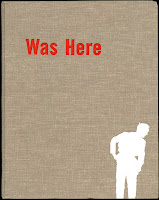
Watch Me Disappear Blog
This blog houses links and such related to biotechnologies and the relationship between virtual and physical bodies. My research focuses on gendered bodies, self-injury, and resistance in virtual communities.

 |
| Graphic design is never just there |
 |
| Cover of McVarish / Was Here |
 |
| MacArthur's Map of the World upside down...or rightside up? |
 |
| beauty icon |
 |
| camera obscura |
 |
| one of the earliest "photoshopped" images |
 |
| in more ways than one |
 |
| as if she doesn't look good enough |
 |
| homogenized beauty |